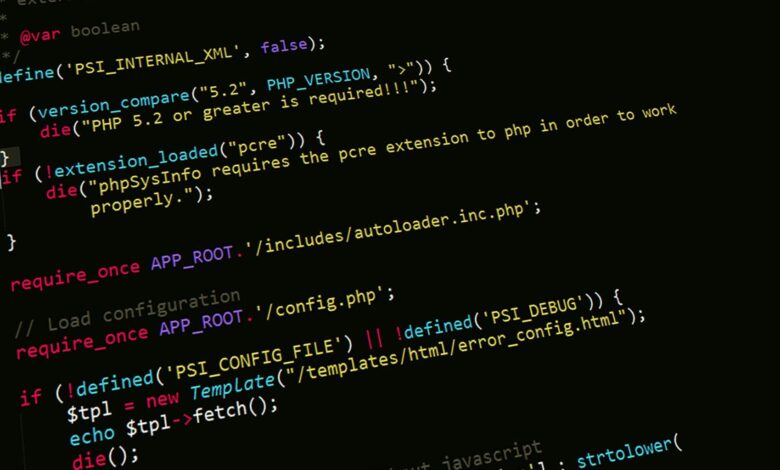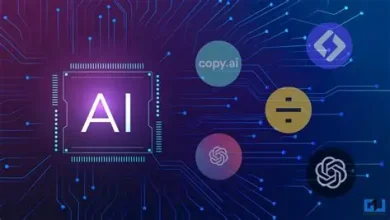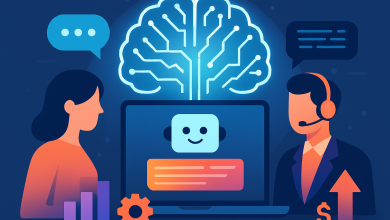
Artificial intelligence (AI) is no longer a futuristic concept; it is quickly becoming a part of our daily lives and business operations. It has enormous potential for increasing employee productivity through automated content creation and code generation, as well as improving customer experiences through personalized chatbots and virtual assistants.
However, this transformative power brings inherent challenges, necessitating a shift in how we approach AI ethics—from aspirational principles to concrete, actionable frameworks that ensure safety, fairness, and transparency.
The era of simply stating ethical intentions is giving way to a growing call for demonstrable responsibility. Governments, businesses, and the general public recognize that in order to build trust and ensure that the benefits of AI are distributed equitably, practical safeguards must be meticulously designed and embedded into AI systems from the start. This is about more than just compliance; it’s about developing long-term, trustworthy artificial intelligence.
From Abstract Ideals to Operational Realities
High-level principles such as fairness, transparency, accountability, and privacy are essential foundations for responsible AI. They serve as a moral compass and a guide for development, forming the ethical foundation on which systems are built. However, principles are insufficient for navigating the complexities of real-world AI applications.
The critical next step, and the focus of current innovation, is to translate these ideals into operational tools, robust processes, and enforceable policies that can be consistently applied, monitored, and adjusted.
This transition is critical because, while generative AI is extremely powerful, it can introduce new and increased risks. These include responding to inappropriate or irrelevant topics, creating harmful or offensive content that can harm brand reputation or cause distress, inadvertently disclose sensitive user or corporate information, and perpetuate subtle and overt biases that result in unfair or discriminatory user outcomes.
Without practical, configurable controls, these risks can erode user trust, result in regulatory scrutiny, and ultimately stymie the adoption of useful AI technologies.
Building Blocks of Actionable AI Safety: The Guardrail Approach
Actionable frameworks for responsible AI are not monolithic; they are made up of various configurable controls and policies, also known as “guardrails.” These are intended to proactively guide AI behaviour, mitigate potential harms, and ensure outputs are consistent with an organization’s specific ethical standards and operational needs.
Key components of these frameworks frequently include:
1. Organizations can use Denied Topic Management to prevent AI applications from discussing or creating content on specific topics or themes. This is critical for staying focused, preventing the spread of misinformation, and avoiding areas outside the AI’s designated expertise or an organization’s comfort zone. For example, a customer service AI for a retail company should be prohibited from providing financial or medical advice.
Implementation entails developing clear, natural language definitions for these topics as well as providing representative example phrases (both user inputs and potential AI responses) that would result in the restriction. This ensures that the AI recognizes the boundaries of its conversational domain.
2. Sophisticated filters detect and block harmful content in user prompts and AI-generated outputs. Hate speech, harassment, incitement to violence, sexually explicit material, and other abusive language are common examples of these categories.
The sensitivity of these filters can frequently be adjusted across multiple levels (e.g., none, low, medium, high) to meet specific use case requirements, cultural contexts, and organizational policies. This configurability enables a balance between robust safety and AI utility, avoiding overly restrictive filtering that could stifle legitimate conversation.
3. Privacy Protection with PII Redaction: The unwavering commitment to user privacy is a key component of responsible AI. Modern frameworks are increasingly including advanced capabilities for automatically detecting and redacting Personally Identifiable Information (PII) in AI responses before they reach the user.
This may include names, addresses, phone numbers, email addresses, social security numbers, or financial information. Similar filters can be applied to user inputs to prevent the AI system from processing or logging PII that isn’t needed, reducing the data footprint and privacy risks. The types of PII to be redacted can be customized based on application requirements and applicable data protection regulations.
4. Custom Word Filtering (Profanity and Term Blocking): Organizations often require granular control to block specific words or phrases. This includes filtering profane language, but it can also include blocking competitor names in certain marketing contexts, internal project codenames that should not be made public, or terms that are especially sensitive for a specific brand or user base.
These systems can be configured to either completely block the input/output, mask the offending words (e.g., replacing them with asterisks), or respond with a pre-defined, neutral message, providing flexibility in how violations are handled.
A Layered Approach to AI Interaction: Defence in Depth
Implementing these controls effectively frequently necessitates a layered, “defence-in-depth” approach to how AI systems process data and generate responses. This provides multiple checkpoints for safety and policy compliance. Consider the typical interaction flow:
User Input Assessment (Pre-Processing): Before a query reaches the core AI model, it goes through initial safety checks. This layer can determine whether the input immediately pertains to a clearly defined denied topic or contains overtly harmful content or blocked words. If a violation is detected here, the query may be rejected completely, or the user may receive an instant message explaining why the query cannot be processed.
AI Model Processing: Once the input passes initial checks, the foundation model (FM) or specialized AI model interprets the intent and generates a response. The model may include some inherent safety training, but this is not the only factor to consider.
Output Moderation (Post-Processing): The guardrail system reviews the AI-generated response before delivering it to the user, providing additional scrutiny. This is where the configured content filters (for hate, sexual content, etc.), PII redaction mechanisms, and custom word filters are strictly enforced. The system determines whether the AI’s output has inadvertently strayed into a prohibited topic, generated harmful content, or contained sensitive information.
If the AI’s output passes post-processing checks, the user receives a final, moderated response. If a violation is detected, the system has several options: block the response completely, send a pre-scripted safe message, attempt to re-generate a compliant response, or flag the interaction for human review, depending on the severity and configuration.
This multi-stage process allows for multiple opportunities to identify and mitigate potential issues, ensuring that interactions are safe, appropriate, and consistent with organizational values and legal obligations.
Example System: “Athena” – An Enterprise Knowledge Assistant
Assume a company, “InnovateCorp,” creates an internal AI assistant called “Athena.” Athena’s role is to assist employees in finding information from internal documentation, answering HR policy questions, and assisting with project management inquiries. Let’s understand why guardrails would be important.
Athena’s Guardrail Configuration:
1. Denied Topics:
- Unreleased Products & Strategy: Definition: “Any discussion, speculation, or information pertaining to products, services, or strategic plans not yet publicly announced by InnovateCorp.” Example phrases: “When is Project Titan launching?”, “Tell me about the Q4 confidential strategy.”
- Personal Employee Grievances: Definition: “Queries or discussions related to specific interpersonal conflicts, complaints about colleagues or managers not channelled through official HR processes.”
- Financial Investment Advice: Definition: “Any guidance or recommendations related to personal investments, stock market predictions, or InnovateCorp stock performance beyond publicly available reports.”
- Non-Work Related Controversial Subjects: A curated list of social/political topics deemed inappropriate for a workplace assistant.
2. Content Filters (for Prompts and Responses):
- Hate Speech, Harassment, Violence: Set to “High” to ensure a respectful environment.
- Sexual Content: Set to “High.”
- Insults: Set to “Medium,” allowing for some colloquialisms but blocking outright offensive terms.
3. PII Redaction (in Responses and potentially logged inputs):
- Employee ID Numbers, Home Addresses, Personal Phone Numbers, Salary Information: If Athena accidentally surfaces a document snippet containing this, it must be redacted.
- Sensitive Health Information: If any internal documents inadvertently contain such details.
4. Word Filters:
- Profanity List: Standard list, masked with asterisks.
- Internal Jargon Misuse: A list of sensitive internal project codenames that should only be discussed in specific contexts, or if used incorrectly, Athena might prompt for clarification or state it cannot discuss it.
- Competitor Bashing: Blocking phrases that are overly disparaging of competitors, aiming for neutral, factual comparisons if necessary.
Scenario: How Athena’s Guardrails Work
Scenario 1: Employee asks about an unreleased product.
- User Input: “Hey Athena, what are the new features in the upcoming ‘Phoenix’ software update?” (Phoenix is unannounced).
- Pre-processing (Denied Topic): The “Unreleased Products & Strategy” guardrail is triggered.
- Athena’s Response: “I can only provide information on publicly announced products and updates. For details on upcoming releases, please refer to official internal announcements from the product team.”
Scenario 2: Employee uploads a document for summarization that contains PII.
- User Input: “Athena, summarize this project debrief document for me.” (The document contains a list of team members with their personal mobile numbers).
- AI Model Processing: Athena generates a summary.
- Post-processing (PII Redaction): The guardrail detects the mobile numbers in the generated summary.
- Athena’s Response: The summary is provided, but all personal mobile numbers are replaced with “[REDACTED_PHONE_NUMBER]”.
Scenario 3: Employee uses inappropriate language.
- User Input: “Athena, this stupid printer isn’t working again, tell me how to fix the damn thing!”
- Pre-processing (Word Filter/Content Filter): “stupid” might pass a medium insult filter, but “damn” might be flagged by the profanity filter.
- Athena’s Response (if profanity is blocked): “I understand you’re frustrated with the printer. Please describe the issue without using offensive language, and I’ll do my best to help you find a solution.”
These guardrails are not static rules; they are configured and managed using a dedicated interface in Athena’s administrative backend. The AI governance team at InnovateCorp would review the effectiveness of these guardrails on a regular basis, update denied topics with new internal policies, and fine-tune filter sensitivities based on employee feedback and observed AI behaviour.
The Path Forward: Collaboration, Standardization, and Education
Responsible AI is not a one-time setup; it is a continuous commitment and iterative process. These safety frameworks must be meticulously tailored to each deployment’s specific use cases, cultural context, risk appetite, and organizational policies. AI, such as Athena, may differ significantly from a public-facing customer service chatbot or an AI tool used to generate creative content.
The landscape of AI capabilities and associated risks is constantly changing. New vulnerabilities can emerge, societal norms can shift, and regulatory requirements can evolve. Therefore, any frameworks we create must be dynamic and adaptable. This involves:
- Continuous monitoring that includes logging AI interactions, guardrail activations, and instances of content blocking or modification.
- Feedback Mechanisms: Allow users to report problematic AI behaviour or outputs.
- Regular audits ensure the AI system aligns with responsible AI principles and guardrails are effective.
- Iterative refinement involves updating denied topics, fine-tuning filter sensitivity, expanding PII detection categories, and adding custom word lists to address new challenges or policy changes.
A lot of collaboration is needed to get to frameworks for responsible AI that everyone agrees on and can use. Businesses that make and use AI, academics who look into new safety techniques and ways to reduce bias, civil society groups that fight for user rights, and governments that make clear rules for regulations, all play a big part.
As the field grows, we can expect harm taxonomies, safety controls, and best practices for implementation and oversight to become more alike. A sense of responsibility and critical thinking about AI technologies will need to be taught to both AI developers and the public at large.
Trust is important for the future of AI. We can make AI systems that are not only smart and creative, but also responsible, fair, and safe for everyone by clearly switching from well-meaning rules to strong, useful, and flexible safety frameworks, like the guardrails we discussed above. This commitment to making ethics work is what will eventually allow AI to have its full positive and fair effects on all parts of society.





